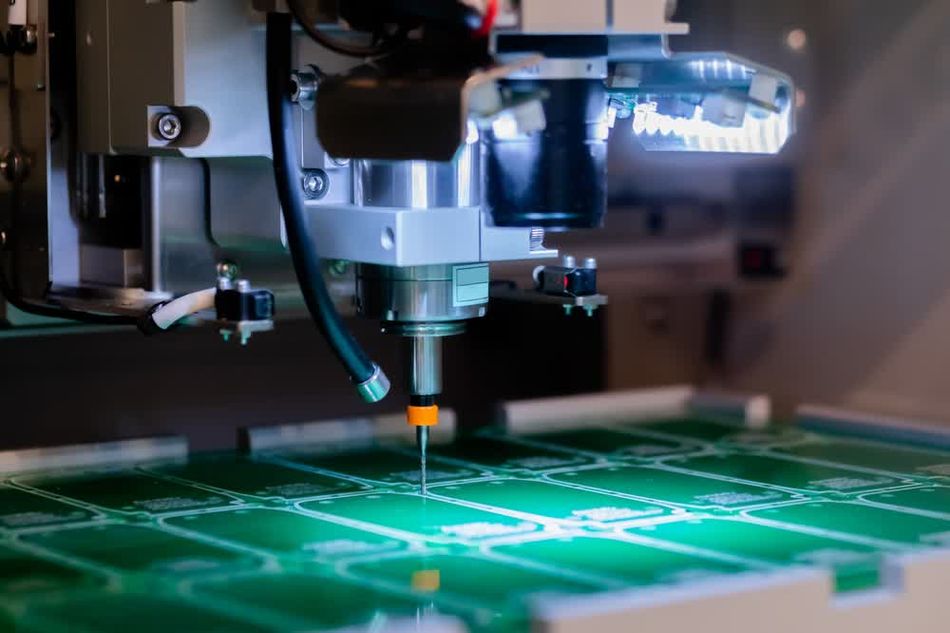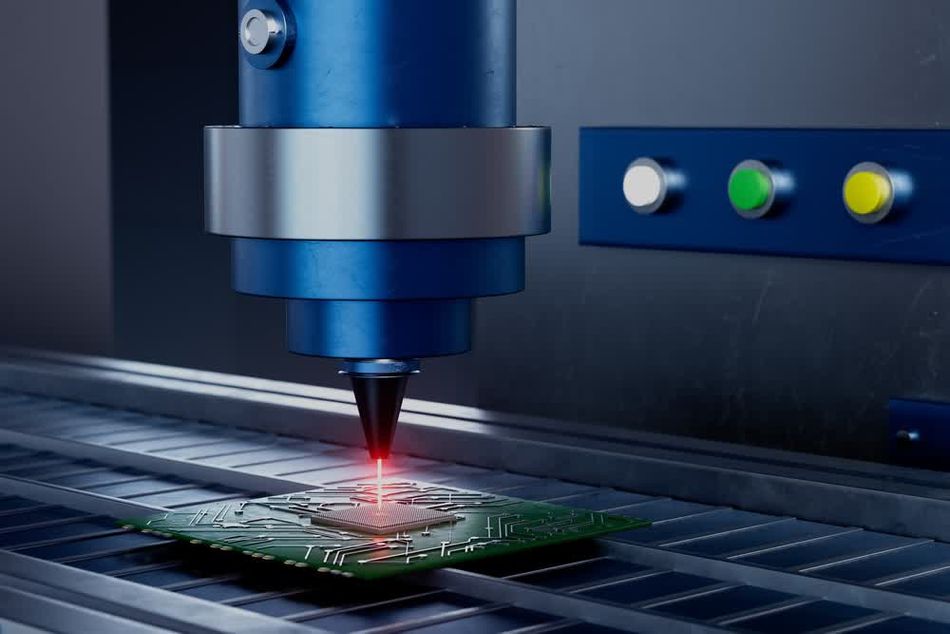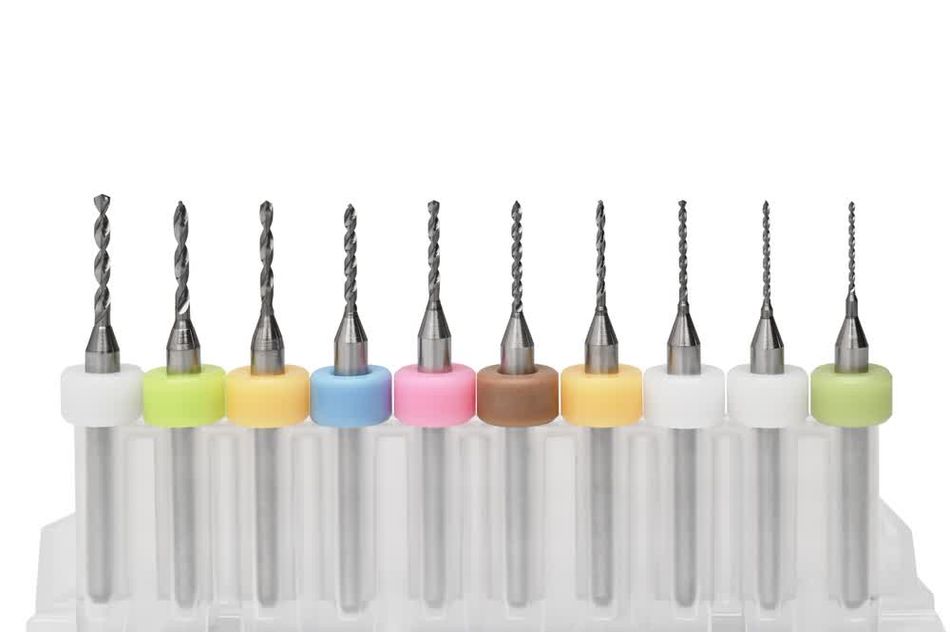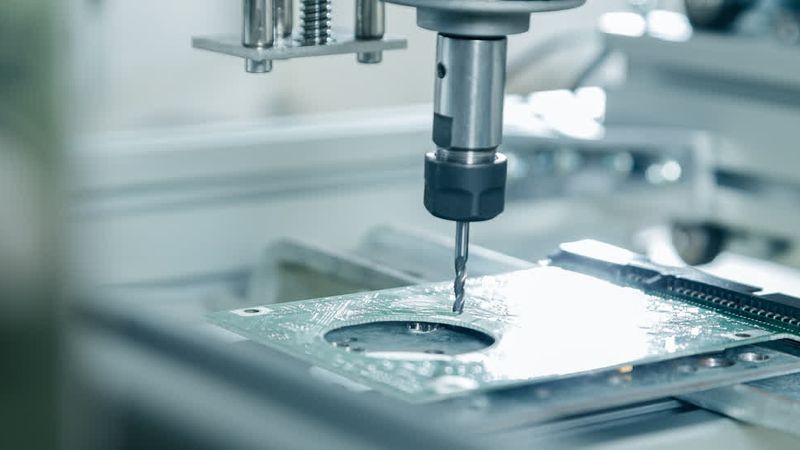PCB Drilling: Precision Techniques for Modern Electronics
Explore how PCB drilling forms the backbone of modern electronics by enabling seamless circuit connectivity and ensuring robust device performance. Learn practical insights and expert tips to optimize your manufacturing process.
Introduction
PCB drilling lies at the core of modern electronics manufacturing, which is the crucial process, enabling electrical connections within circuit boards. By creating precise holes for vias and component leads, it ensures reliable functionality in devices ranging from smartphones to aerospace systems. Precision and efficiency are paramount in this intricate process, underscoring the necessity for cutting-edge tools and meticulous attention to detail to meet the exacting demands of today’s technology-driven landscape. It is not merely a technical step but a critical enabler of the complex interplay of electrical components.
This article dives into the techniques used in PCB drilling, from mechanical and laser methods to advanced tools and materials. It also addresses the practical challenges faced in maintaining precision and overcoming common issues, offering actionable insights to optimize your drilling processes. Whether you are a seasoned professional or a newcomer, this guide provides valuable information to enhance your manufacturing efficiency.
Suggested Reading: PCB Layout: A Comprehensive Guide
The Essentials of PCB Drilling
PCB drilling is a cornerstone of electronics manufacturing, enabling the creation of pathways for electrical connectivity in printed circuit boards (PCBs). Manufacturers can achieve the intricate designs required for modern electronics by employing precise methods and tools. This section outlines the critical aspects of PCB drilling, including its importance, the various techniques used, and the tools essential for success. Mastering this process ensures product reliability and optimal performance in competitive markets.
What Is PCB Drilling, and Why Does It Matter?
PCB drilling is the process of creating precise holes in a printed circuit board to allow for electrical connections and component placement. The holes are typically drilled before the lamination and electroplating process during PCB design. Generally, the holes are referred to as vias, and they enable a seamless flow of electrical signals between different layers of the board, ensuring functionality and reliability.
Moreover, PCB drilling is used to create PCB mouse bites, an essential process for processing large PCB batches in one go. This step forms the backbone of circuit design, linking components with precision.
Suggested Reading: PCB Panelization: Everything You Need to Know
Due to its high precision, accuracy, and cost-effectiveness, PCB drilling has many applications in wide-ranging industries:
Used extensively in industries such as consumer electronics, automotive, aerospace, and telecommunications.
Essential for applications requiring multilayer boards and compact circuit designs.
Supports the development of advanced devices like smartphones, medical equipment, and IoT solutions.
Ensures long-term durability and high performance in challenging environments.
Considering its vast applications in the commercial sector, PCB designers export drill files to manufacturers who employ various automated drilling techniques through CNC machines or laser equipment.
Types of PCB Drilling: Techniques and Tools
PCB drilling employs two primary techniques:
Mechanical Drilling
Mechanical drilling involves high-speed rotary drill bits to create precise holes, making it ideal for cost-effective, high-volume production. It’s a less complicated process allowing the manufacturers to drill holes as small as 6 mils.
Compared to other techniques, mechanical drilling is less accurate. Moreover, the type of material also impacts the drilling cycle span. For instance, these drills can work for up to 800 cycles on FR4 materials which are softer than high-density materials which only allow a 200-cycle drilling lifespan.
Dremel bits are common mechanical drilling tools thanks to their versatility and low cost.

Laser Drilling
Laser drilling is a non-contact process involving a laser beam that removes material from the PCB. The technique ensures high accuracy and precise hole formation and offers better depth control than mechanical drilling techniques. Due to such high precision, laser drilling is used for creating vias and small holes with diameters as small as 2 mils.

Compared to mechanical drilling, laser drilling is more costly and can be challenging on PCBs due to variations in the optical properties of different layers. The process utilized coherent lasers that offer high precision and support micro-scale applications.
Suggested Reading: PCB Layers: Everything You Need to Know
Technique | Precision Level | Cost | Drill bits | Best Application |
Mechanical | Moderate | Low | Dremel bits | High-volume, cost-effective boards |
Laser | High | High | Coherent lasers | Micro-scale, high-precision boards |
Additionally, advanced CNC systems and specialized drill bits with diamond coatings are commonly employed for challenging projects requiring exceptional precision. ASCII diagrams of mechanical setups and laser drilling paths are recommended to visually clarify the processes. These visual aids help understand optimal setups for specific applications.
Manual Drilling
Manual drilling is a simple technique often used for drilling PCB holes without any software requirements. It’s typically used for DIY projects and is quite similar to drilling holes in a piece of wood. The process involves a hand-operated drill machine requiring the operator to manually position the board for appropriate holes. It’s a less safe option but probably the cheapest compared to laser and mechanical drilling techniques.

Optimizing PCB Drilling Processes
Essential Equipment and Materials
To achieve precision and efficiency in PCB drilling, several key tools and materials are essential:
CNC Machines: These provide automated control for precise drilling operations, accommodating both mechanical and laser drilling techniques. Advanced CNC systems further enable real-time adjustments for enhanced performance.
Drill Bits: High-speed steel (HSS) and carbide drill bits are commonly used for mechanical drilling, chosen for their durability and performance. Specialized coatings can further improve their lifespan.
Lasers: CO2 and UV lasers offer unparalleled precision for micro-scale applications, making them suitable for complex multilayer boards. These tools enable intricate designs that were previously unattainable.
Material Compatibility: Ensuring that drill bits and lasers are compatible with PCB materials such as FR4 or aluminum is crucial for optimal results. Compatibility assessments reduce errors and prolong tool lifespan.
Suggested Reading: PCB Material: A Comprehensive Guide to Understanding and Choosing the Right Materials
By selecting the right equipment and understanding material compatibility, manufacturers can minimize errors and enhance drilling performance. Investing in high-quality tools and materials often results in significant long-term cost savings.
Precision Drilling Techniques: Best Practices
Achieving precision in PCB drilling requires meticulous attention to technique and equipment settings. Follow these steps for optimal results:
Select the Right Drill Bits: Choose high-speed steel (HSS) or carbide bits for mechanical drilling, ensuring compatibility with the PCB material.

Calibrate Machine Settings: Adjust spindle speed and feed rate to match the material properties and desired hole diameter.
Secure the PCB Material: Use a stable clamping system to prevent movement during drilling.
Optimize Drilling Depth: Set precise depth controls to avoid damage to the board or underlying layers.
Inspect and Replace Worn Tools: Regularly check drill bits and replace them if worn to maintain accuracy.
Maintain Equipment: Clean and service drilling machines regularly to ensure consistent performance.
ASCII diagrams illustrating optimal drill paths and setup configurations are recommended to provide a visual reference for these practices. By adhering to these guidelines, manufacturers can consistently achieve high-quality results.
Types of Holes Created During PCB Drilling
During PCB manufacturing, various types of holes are drilled to serve different purposes.
Connection Holes
Connection holes are used to provide electrical connectivity between different holes and components. The following types of holes are created during the drilling process.
Through-holes: Penetrate the entire board, enabling connections between layers.
Blind Vias: Connect external to internal layers.
Buried Vias: Connect internal layers within the board.
Microvias: Small, laser-drilled holes for high-density connections.
Suggested Reading: Through Hole vs Surface Mount: Unveiling the Optimal PCB Assembly Technique
Mechanical Holes
Mechanical holes are used for mounting and securing PCBs. They do not require any electrical connections allowing some room for inaccuracies. Their typical characteristics include:
Do not require electrical connections.
Support the mounting of components like brackets.
Enhance thermal conductivity by aiding heat dissipation from high-power components.
Provide tooling holes for precise equipment alignment during manufacturing.
Reinforce the PCB's structural integrity.
Troubleshooting and Overcoming Challenges
Common Issues in PCB Drilling
A PCB manufacturing company encountered significant alignment issues during drilling, resulting in frequent rejects and production delays. Upon investigation, the team discovered that their CNC machines lacked the precision required for modern multilayer boards. They addressed this by upgrading to higher-precision CNC machines and implementing rigorous quality control protocols. These changes significantly reduced errors and improved production efficiency.
Issue | Cause | Solution |
Misalignment | Low-precision equipment | Upgrade to high-precision CNC machines |
Overheating | Incorrect spindle speed | Optimize machine settings |
Drill Bit Wear | Overuse of tools | Regular inspection and replacement |
Real-life examples like this highlight the importance of identifying root causes and taking actionable steps to resolve common drilling challenges effectively. Such measures can be tailored to different scales of production, from small-scale prototype development to large-scale industrial manufacturing, ensuring adaptability and consistency across various applications. These proactive measures are essential for maintaining production standards.
Key Considerations During PCB Drilling Process
Positional Deviation
Inaccurate hole placement can cause fractures and intersections.
Requires careful equipment maintenance (e.g., drill bit replacement, calibration) and may benefit from laser drilling for rigid substrates.
Layer Separation
Improper drilling can weaken the PCB's layered structure.
Choose manufacturers with expertise in lamination and drilling.
Burr Formation
Caused by drill bit wear, excessive heat, and material variations.
Prevent burrs by using sharp drill bits, appropriate speeds, coolants, and understanding material properties.
Drill-bit Breakage
Too much pressure on the drill bit can lead to their breakage.
If the bits are not strong enough, it eventually leads to higher production costs and frequent replacement.
Minimizing Errors and Ensuring Durability
To ensure error-free and durable PCB drilling results, quality control should be applied during and after the drilling process. Follow these steps to maintain accuracy and durability:
Establish Quality Control Checks: Implement real-time monitoring of drilling processes to identify and correct deviations immediately.
Test Drill Accuracy: Use coordinate measuring machines (CMMs) or other precision testing tools to verify hole positions and dimensions.
Inspect Drilled Holes: Examine holes for burrs, cracks, or uneven edges that could affect performance.
Verify Depth Accuracy: Confirm that drilling depths align with design specifications using depth gauges.
Document Results: Keep records of quality checks and testing outcomes to trace and resolve recurring issues effectively.
Train Personnel: Ensure all operators are trained to handle advanced equipment and adhere to best practices.
Conclusion
PCB drilling stands as a vital process in electronics manufacturing, requiring the right techniques, tools, and troubleshooting methods to ensure efficiency and precision. Looking ahead, advancements in drilling technology and materials promise to further enhance capabilities, enabling manufacturers to tackle even more complex designs and tighter tolerances with confidence. By adopting best practices and addressing challenges proactively, manufacturers can significantly enhance production outcomes and maintain competitive quality standards. This guide offers foundational insights while empowering professionals to refine their techniques for sustained excellence.
FAQs
1. What materials can be used for PCB drilling?
Common materials for PCB drilling include:
FR4 (fiberglass-reinforced epoxy laminate)
Aluminum
Polyimide
Copper-clad laminates
Advanced composites for specialized applications
2. What are the effects of PCB materials on the drilling process?
Material properties such as hardness, thermal stability, and thickness play a major role in the drilling process. These characteristics decide the drill bit types, feed rates, spindle speeds, etc.
3. How can I choose the right drilling technique for my project?
Board Design Feature | Recommended Technique | Reason |
High-volume production | Mechanical | Cost-effective |
Micro-scale or precision work | Laser | High accuracy and detail |
Multilayer boards | Laser | Excellent for tight tolerances |
4. What are the main differences between mechanical and laser drilling?
Mechanical Drilling: Suitable for cost-effective, high-volume production.
Laser Drilling: Ideal for high-precision or micro-scale applications.
Precision: Mechanical has moderate precision, while laser offers high precision.
Cost: Mechanical is low cost; laser is high cost.
Versatility: Mechanical drilling handles a wide range of materials, while laser is optimized for delicate or specialized designs.
5. What are the smallest hole sizes achievable with PCB drilling?
Mechanical drilling supports up to 6 mil diameters while laser drilling can go as low as 2 mils. In some cases, laser drilling can create holes as small as 25 microns.
References
1. The Ultimate Guide to PCB Drilling | Everything You Need to Know - JHYPCB
2. Mastering PCB Drilling: Techniques, Processes, and Best Practices for Precision
3. PCB Drilling Guide: How to Do It and Which Techniques to Use - TechSparks
4. Mastering The Art Of PCB Drilling: 9 Exquisite Techniques
5. PCB Drilling: Definition, Types, and How It Works – Flex PCB
Table of Contents
IntroductionThe Essentials of PCB DrillingWhat Is PCB Drilling, and Why Does It Matter?Types of PCB Drilling: Techniques and ToolsMechanical DrillingLaser DrillingManual DrillingOptimizing PCB Drilling ProcessesEssential Equipment and MaterialsPrecision Drilling Techniques: Best PracticesTypes of Holes Created During PCB DrillingConnection HolesMechanical HolesTroubleshooting and Overcoming ChallengesCommon Issues in PCB DrillingKey Considerations During PCB Drilling ProcessPositional DeviationLayer SeparationBurr FormationDrill-bit BreakageMinimizing Errors and Ensuring DurabilityConclusionFAQs1. What materials can be used for PCB drilling?2. What are the effects of PCB materials on the drilling process?3. How can I choose the right drilling technique for my project?4. What are the main differences between mechanical and laser drilling?5. What are the smallest hole sizes achievable with PCB drilling?References
